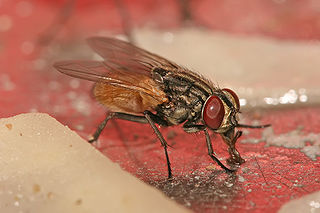
Muscinae is a subfamily of the family Muscidae. It includes two of the more familiar genera within the Muscidae family; Musca and Stomoxys.

Muscini is a Tribe of flies from the family Muscidae.

Phaoniini is a tribe in the fly family Muscidae. It contains the largest Muscid genus Phaonia.

Morellia is a very large genus from the fly family Muscidae. Morellia are plumpish black flies, largely lacking eye hairs - sparse at most. they have a white dusting on the parafacialia and the scutum has 4 distinct longitudinal stripes.

The Mydaeinae are a subfamily of true flies, belonging to the family Muscidae.

Eudasyphora is a large genus from the fly family Muscidae.
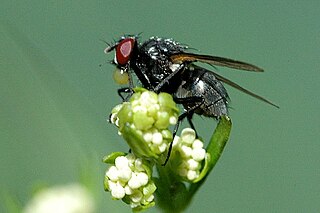
Azeliini is a tribe of flies from the family Muscidae.

Stomoxyini is a tribe of flies from the family Muscidae.
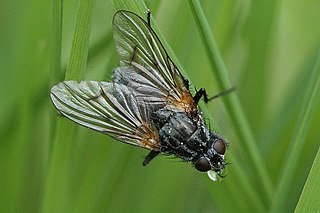
The subfamily Phaoniinae is within the Diptera family Muscidae. All species are in the tribe Phaoniini.
Atherigoninae is a subfamily of insects within the Diptera family Muscidae.
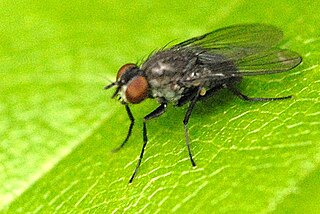
Coenosiini is a tribe of flies from the family Muscidae.
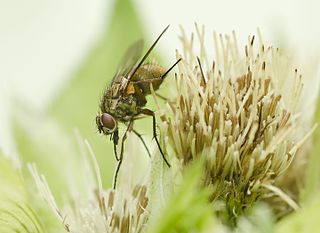
Phaonia angelicae is a species of fly which is widely distributed across the Palaearctic.

Mydaea setifemur is a fly from the family Muscidae.

Muscina prolapsa is a species of fly from the family Muscidae.

Myospila meditabunda is a fly from the family Muscidae.
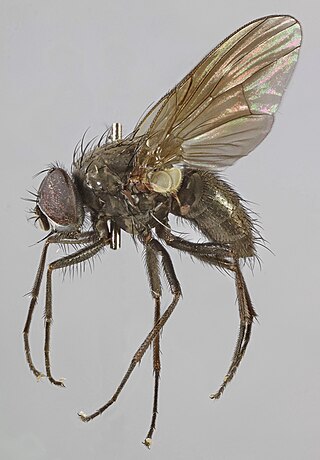
Hebecnema nigra is a fly from the family Muscidae. It is found in the Palearctic.

Helina confinis is a fly from the family Muscidae. It is found in the Palearctic.
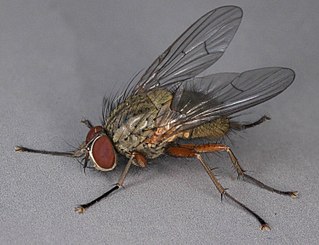
Helina impuncta is a fly in the family Muscidae. It is found in the Palearctic.

Helina setiventris is a fly from the family Muscidae. It is found in the Palearctic.

Lispe pygmaea is a fly from the family Muscidae. It is found in the Palearctic.


















